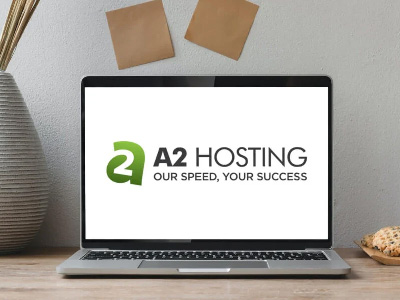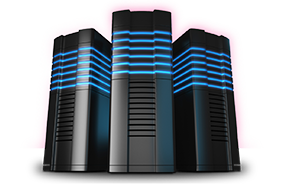A2 Hosting Review 2025: Are Their 'Turbo' Servers Really Faster?
A slow website frustrates visitors and signals to Google that your site may not be worth ranking. This is why choosing a fast website hosting provider is one of the most critical decisions for any online business owner. A2 Hosting has built its reputation on speed, centering its marketing around its premium 'Turbo' plans. But are they really worth the extra investment? We put them to the test in this comprehensive 2025 review.

What Exactly Makes A2 Hosting's Servers 'Turbo'?
Before diving into the performance data, it's important to understand what you're paying for. 'Turbo' isn't just a fancy name; it represents a specific technology stack designed for high performance. Unlike their standard shared hosting plans which run on the traditional Apache web server, A2's Turbo plans leverage a more powerful and efficient infrastructure.
- LiteSpeed Web Server: This is the core of the Turbo offering. LiteSpeed is a direct replacement for Apache but is built for speed and scalability. It handles connections faster and more efficiently, especially under traffic spikes. Crucially, it enables the use of the acclaimed LSCache plugin for WordPress, which offers server-level caching that is significantly more effective than traditional file-based caching plugins.
- NVMe M.2 Storage: While many hosts now offer SSDs (Solid State Drives), A2's Turbo plans use NVMe (Non-Volatile Memory Express) drives. Think of this as the difference between a fast highway and a Formula 1 racetrack. NVMe drives offer dramatically higher read/write speeds compared to older SATA SSDs, leading to faster database queries, file access, and quicker backend operations.
- Increased Resource Allocation: Turbo plans come with more server resources. This means more allocated CPU cores and physical memory (RAM) for your account. This prevents the 'noisy neighbor' effect common in shared hosting and ensures your site has the power it needs to run complex scripts, handle e-commerce transactions, and serve a growing audience without slowing down.
- AMD EPYC & Intel Xeon Gold Processors: These plans run on some of the most powerful server-grade processors available, ensuring that every request is processed with maximum efficiency.
Our Testing Methodology: A Fair and Transparent Benchmark
To provide a credible review, we couldn't just take A2 Hosting's word for it. We created a real-world testing environment to measure performance accurately. Here’s how we did it:
- The Test Sites: We purchased two separate A2 Hosting shared plans: the standard 'Drive' plan and the premium 'Turbo Boost' plan. On each, we installed an identical WordPress website using the popular Astra theme and an Elementor-built homepage with high-resolution images, text, and interactive elements to simulate a typical small business website.
- The Tools: We used a suite of industry-standard tools to measure performance over a 30-day period, running tests daily from multiple geographic locations. Our toolkit included:
- GTmetrix: To measure Core Web Vitals like Largest Contentful Paint (LCP), Total Blocking Time (TBT), and overall load performance.
- Pingdom: To test load times from various servers around the world (North America, Europe, and Asia).
- Google PageSpeed Insights: To get a direct report on how Google sees our site's performance on mobile and desktop.
- Loader.io: To conduct stress tests, simulating 50 simultaneous users over a one-minute period to see how each plan handled a traffic surge.
The Results: A2 Turbo vs. Standard Showdown
After a month of rigorous testing, the data was clear. The 'Turbo' moniker is not just marketing fluff. Here’s a breakdown of our findings:
Time to First Byte (TTFB)
TTFB measures server responsiveness. It's how quickly the server sends back the very first byte of data after receiving a request. A low TTFB is a sign of a well-configured, powerful server.
- Turbo Plan Average TTFB: 145ms
- Standard Plan Average TTFB: 480ms
Verdict: The Turbo plan was over 3x faster in server response time. This initial speed advantage has a cascading effect on the entire loading process.
Largest Contentful Paint (LCP)
LCP is a Google Core Web Vital that measures how long it takes for the largest element (usually a hero image or headline) to become visible. It's a key indicator of perceived load speed.
- Turbo Plan Average LCP: 1.05s
- Standard Plan Average LCP: 2.21s
Verdict: The Turbo site consistently loaded its main content in under half the time of the standard site, easily passing Google's recommended threshold of 2.5s. This is a massive win for user experience and SEO.
Fully Loaded Time
This is the classic metric of how long it takes for the entire page to finish loading all its assets.
- Turbo Plan Average Fully Loaded Time: 1.3s
- Standard Plan Average Fully Loaded Time: 2.9s
Verdict: Again, the Turbo plan was more than twice as fast, delivering a snappy, near-instant loading experience that is essential for retaining visitors.
Stress Test Results
This is where the Turbo plan truly shone. When we sent 50 virtual users to each site simultaneously, the standard plan's response time slowed significantly, with some requests timing out. The Turbo plan, thanks to its superior resources and LiteSpeed server, handled the traffic spike with almost no degradation in performance. This makes it a far more reliable choice for sites with fluctuating or growing traffic.
How Does A2 Turbo Compare to Competitors?
Speed is relative, so we also compared the A2 Turbo Boost plan against similarly priced offerings from two other popular providers: SiteGround (GoGeek plan) and Hostinger (Business plan).
- vs. SiteGround GoGeek: SiteGround is renowned for its premium performance and support, built on Google Cloud Platform. In our tests, SiteGround's TTFB was neck-and-neck with A2 Turbo, sometimes even slightly faster. However, A2 Turbo often had a slight edge in fully loaded time, likely due to the NVMe storage. SiteGround's support is arguably more polished, but its renewal prices are significantly higher than A2's.
- vs. Hostinger Business: Hostinger is a leader in affordable hosting and also uses LiteSpeed servers. Its performance was excellent for its price point, but A2 Turbo consistently outperformed it across all metrics, especially in TTFB and under load. Hostinger is a fantastic budget option, but A2 Turbo is a clear step up in raw power for those who can afford it.
The Final Verdict: Who Should Choose A2 Hosting's Turbo Plans in 2025?
After extensive testing, we can confidently say that A2 Hosting's Turbo servers are genuinely and significantly faster than their standard counterparts. The combination of LiteSpeed, NVMe storage, and higher resource limits delivers a measurable performance boost that directly impacts user experience and SEO.
So, is it the right choice for you? It depends on your needs and budget.
Choose an A2 Turbo Plan if:
- You run an e-commerce store where speed is directly tied to conversions.
- You have a high-traffic blog or a content-heavy site.
- Your website is your primary business tool and a key source of leads.
- You are a developer who values a fast, responsive backend and staging environment.
- You understand that investing in site speed provides a tangible return through better engagement and search rankings.
Stick with a Standard Plan (or consider a budget alternative) if:
- You are launching a brand-new personal blog or portfolio with low traffic expectations.
- Your budget is the absolute number one priority.
- Your website is very simple, with minimal scripts and plugins.
In conclusion, for any serious website owner, developer, or small business, the extra cost for an A2 Hosting Turbo plan is not just an expense—it's a strategic investment in performance. It's one of the easiest and most effective ways to secure a faster website, making it one of the best hosting for small business options on the market today.
What's Your Experience?
Now we want to hear from you. Have you used A2 Hosting's standard or Turbo plans? Did your results align with our findings? Leave a comment below with your questions or your own performance experiences! If you found this in-depth review helpful, please share it with a fellow website owner who is serious about speed.
















